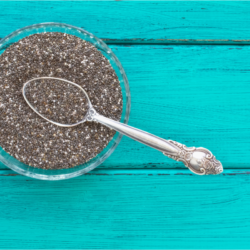Recently, significant progress has revolutionized knowledge of the pharmacology of cannabinoid derivatives. Synthetic cannabinoids such as PEA have been developed and an endocannabinoid system has been identified as well as the receptors and ligands that constitute it. Current clinical data strongly support the analgesic properties of cannabinoids on inflammatory and neuropathic pain.
Focus on PEA (Palmitoyl Ethanol Amide)
PEA is an effective pain reliever in chronic pain. Controlling chronic pain is a major challenge for healthcare professionals. Especially when you want to achieve this without using nonsteroidal anti-inflammatory drugs, corticosteroids or opioids. A completely natural remedy that is often successful in this case is the body’s own substance, PEA, which can be used as a safe dietary supplement. Initially often effective in neuropathic pain, PEA can also be useful in other chronic pain, depression, cognitive impairment or neurodegenerative diseases.
What is PEA ?
Despite its complicated name, PEA is a fairly simple substance that occurs naturally in our body in small amounts; it is an amide, derived from the fatty acid bound to the endogenous transmitter of cannabinoids: palmitic acid.
PEA acts as an “endogenous modulator” which can bind to various receptors and which, as a member of endocannabinoids, is produced primarily as a natural response to pain, inflammation and stress. PEA was discovered as a component of egg yolk in the 1950s, but the substance can now also be isolated from soya lecithin, peanut oil, safflower, castor oil, peanut oil, etc. olive, or offal.
New perspectives for health :
PEA is a cannabinoid like CBD, but not from the cultivation of cannabis. PEA is a product that is arousing interest for its multiple health applications.
Healthcare professionals often face the limitations and potential dangers of medications when treating chronic pain. The possible negative effect on the gastric and intestinal mucous membranes of anti-inflammatory drugs of the NSAID type, the numerous side effects in the event of prolonged use of corticosteroids, the physical dependence and the possible addictive effect of opioids and opiates, the restrictions of anticonvulsants, limited results from antidepressants, etc. are creating a strong demand for safe alternatives.
What are the mechanisms of action of PEA in chronic neuropathic pain ?
Under normal circumstances, the body produces adequate amounts of PEA. With chronic inflammation and pain, this is no longer the case. The most likely indication where PEA can make the most difference is neuropathic pain.
The exact way in which PEA reduces nerve pain is based on various mechanisms that reduce neuroinflammation:
- Downregulation of the nuclear receptor PPAR
- Effect on various cannabinoid receptors (CB1, CB2, GPR55)
- Inhibition of overactive microglial cells (support cells in the nervous system), over-stimulated mast cells and other competent immune cells
Nerve pain that often improves with PEA is “neuro-compression syndromes” in which the nerves undergo mechanical pressure and associated inflammation (sciatica, hernia, and carpal tunnel syndrome). But also diabetic neuropathy, postherpetic neuralgia, nerve pain induced by chemotherapy, nerve pain in case of toothache also often respond well to PEA.
What other actions does the PEA exercise ?
- Direct action on mast cells (cells of the immune system) and receptors other than CB1 and CB2, usually activated phyto cannabinoids
- Indirect action on other receptors which open or close ion channels (sodium, magnesium and potassium ions) which acts on the transfer of pain messages and on receptors capable of activating and deactivating the genes controlling pain and inflammation, these also play a role in obesity and glucose metabolism
PEA is active on cannabinoid receptors in cells of the central nervous system. It is synthesized from the phospholipids of the membranes of peripheral cells and the nervous system to respond physiologically as an inflammation repair mechanism, when needed in the face of stress and attacks (infections, infectious, inflammatory, allergic diseases, shocks, etc. pain …)
As a result, PEA plays an important inflammatory, analgesic and immune role.
PEA is therefore available in all cells of the body. It has a regulatory action and also acts as an intercellular messenger. In addition, it can also be combined with other drugs without major risk of drug interaction.
What are the areas of action of the PEA ?
PEA acts on all types of pain :
- Fibromyalgia
- Osteo arthritis, rheumatoid arthritis
- Neuropathic pain caused by disease or injury to the central or peripheral nervous systems
- Lumbar-type back pain, cervical sciatica
- Osteoarthritis, osteoarthritis
- Carpal tunnel syndrome
- Chronic pelvic and vaginal pain
- Chronic pain associated with diabetes: tingling …
- Stroke (PEA acts on pain and spasticity, it limits uncontrollable movements)
- Toothache after dental surgery or chemotherapy
- Parkinson’s disease (associated with Dopamine it slows down the disease and improves the comfort of patients)
- Multiple sclerosis (it relieves pain)
- Alzheimer’s disease (the PEA would play a protective role, it slows down the loss of neurons)
- Epilepsy (decrease in muscle contractures)
- Migraines
PEA has all its advantages as a recognized anti-inflammatory :
- Inflammatory bowel disease (PEA has an anti-inflammatory effect, reduces the intensity of pain and improves quality of life)
- Eye glaucoma (reduction of inflammation)
- By its role on mast cells, PEA should be useful in any air, food or contact allergy by limiting the inflammatory reaction linked to the allergy
A PEA deficiency can lead to depression, dementia, or even motor disorders. :
- Depression (in addition to antidepressant treatment, PEA increases the effect of the treatment and itself has an antidepressant and anxiolytic effect)
- Sleeping troubles
- Addiction to cannabis, THC (by its similarities with phyto-cannabinoids, PEA can be a valuable ally in reducing THC addiction. This property is also found with CBD)
- Obesity (weight loss, reduced appetite)
PEA from a veterinary point of view :
- At the veterinary level, PEA is marketed as a food supplement to treat dermatoses in dogs or cats. The analgesic and anti-inflammatory properties calm scratching and provide comfort.
A little history
In 1939, Alvin F. Coburn was the first to study PEA, researching the effects of egg yolk on preventing rheumatic fever in children in New York City. He then discovered that the phospholipid part of the egg yolk could effectively prevent infection.
Subsequent studies in New York and Chicago have confirmed the effectiveness of this portion of phospholipids in infectious epidemics. Subsequently, it was discovered that this fraction of phospholipids, Palmitoyl Ethanol Amide, was present in soybeans in a higher percentage at a lower cost. These discoveries then brought PEA into the field of health research.
In 1990, Italian researcher Rita Levi-Montalcini studied the effects of PEA. She observed that it worked on the central nervous system and on the peripheral nervous system.
In conclusion
Palmitoyl Ethanol Amide, a molecule known and studied for over 80 years, opens up a wide field of health applications; both in the field of prevention and in improving the lives of patients through its analgesic properties, but also anti-inflammatory. It has no known toxicity. Due to its action with several receptors, it has a wide and favorable potential for a holistic approach to health.
Source :
- Keppel Hesselink, Jan. (2012). New Targets in Pain, Non-Neuronal Cells, and the Role of Palmitoylethanolamide. The Open Pain Journal
- Hesselink JM, Hekker TA. Therapeutic utility of palmitoylethanolamide in the treatment of neuropathic pain associated with various pathological conditions: a case series. J Pain Res
- Paladini A, Fusco M, Cenacchi T, Schievano C, Piroli A, Varrassi G. Palmitoylethanolamide, a Special Food for Medical Purposes, in the Treatment of Chronic Pain: A Pooled Data Meta-analysis. Pain Physician. 2016 Feb
- Steels, E., Venkatesh, R., Steels, E. et al. A double-blind randomized placebo controlled study assessing safety, tolerability and efficacy of palmitoylethanolamide for symptoms of knee osteoarthritis. Inflammopharmacol 27, 475–485 (2019)
- De Gregorio D, Manchia M, Carpiniello B, Valtorta F, Nobile M, Gobbi G, Comai S. Role of palmitoylethanolamide (PEA) in depression: Translational evidence: Special Section on “Translational and Neuroscience Studies in Affective Disorders”. Section Editor, Maria Nobile MD, PhD. This Section of JAD focuses on the relevance of translational and neuroscience studies in providing a better understanding of the neural basis of affective disorders. The main aim is to briefly summaries relevant research findings in clinical neuroscience with particular regards to specific innovative topics in mood and anxiety disorders. J Affect Disord. 2019 Aug







